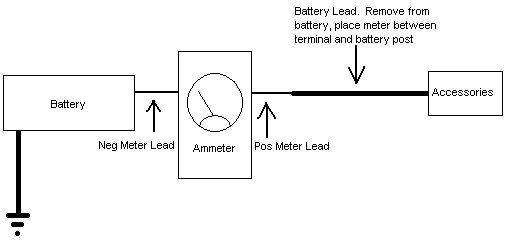Posted: January 30, 2007 at 1:59 PM / IP Logged
Posted: January 30, 2007 at 2:06 PM / IP Logged
Posted: January 30, 2007 at 3:33 PM / IP Logged
Posted: January 30, 2007 at 3:41 PM / IP Logged
Posted: January 30, 2007 at 9:56 PM / IP Logged
Posted: January 31, 2007 at 1:13 PM / IP Logged
Sorry, you can NOT post a reply.
This topic is closed.
 Printable version
Printable version


| You cannot post new topics in this forum You cannot reply to topics in this forum You cannot delete your posts in this forum You cannot edit your posts in this forum You cannot create polls in this forum You cannot vote in polls in this forum |

| Search the12volt.com |
Follow the12volt.com 
Monday, December 15, 2025 • Copyright © 1999-2025 the12volt.com, All Rights Reserved • Privacy Policy & Use of Cookies


Monday, December 15, 2025 • Copyright © 1999-2025 the12volt.com, All Rights Reserved • Privacy Policy & Use of Cookies
Disclaimer:
*All information on this site ( the12volt.com ) is provided "as is" without any warranty of any kind, either expressed or implied, including but not limited to fitness for a particular use. Any user assumes the entire risk as to the accuracy and use of this information. Please
verify all wire colors and diagrams before applying any information.












 Follow that diagram, and note how much current is being pulled. Do this with the key in the off position. It shouldn't be more than maybe 100 to 150 mA, and lower than that is even better.
If it is higher than that, (it probably will be, being as you need a jump-start each morning) start pulling fuses. ONE AT A TIME. Note how much the current drops after each fuse, then replace the fuse. (I would actually start by removing the amplifier remote lead from the amp's remote terminal here, as this is the last item you installed, right?) Check for +12v on the remote terminal. If present, then there is possibly an issue with the HU or the amplifier. You did not tell us the name or brand of amp (or deck, for that matter) you have installed, but cheezy amps CAN have weird power supply issues. (I have seen them power up by themselves without a remote lead even being connected - AND not indicate being on with a power light.) If the amplifier is the offending device, pull the fuse from the deck, while having the remote lead connected. Check for +12v on the remote lead again. If it is now gone, then the HU is the offending component. Replace it.
::::::EDIT::::::
Oh, and make certain your meter is on the 20A range and jacks - FIRST. If you use the low current jacks, (probably labelled 200mA) and the current being measured exceeds what they are rated for, you can burn your meter, if it is not fuse protected.
Follow that diagram, and note how much current is being pulled. Do this with the key in the off position. It shouldn't be more than maybe 100 to 150 mA, and lower than that is even better.
If it is higher than that, (it probably will be, being as you need a jump-start each morning) start pulling fuses. ONE AT A TIME. Note how much the current drops after each fuse, then replace the fuse. (I would actually start by removing the amplifier remote lead from the amp's remote terminal here, as this is the last item you installed, right?) Check for +12v on the remote terminal. If present, then there is possibly an issue with the HU or the amplifier. You did not tell us the name or brand of amp (or deck, for that matter) you have installed, but cheezy amps CAN have weird power supply issues. (I have seen them power up by themselves without a remote lead even being connected - AND not indicate being on with a power light.) If the amplifier is the offending device, pull the fuse from the deck, while having the remote lead connected. Check for +12v on the remote lead again. If it is now gone, then the HU is the offending component. Replace it.
::::::EDIT::::::
Oh, and make certain your meter is on the 20A range and jacks - FIRST. If you use the low current jacks, (probably labelled 200mA) and the current being measured exceeds what they are rated for, you can burn your meter, if it is not fuse protected.